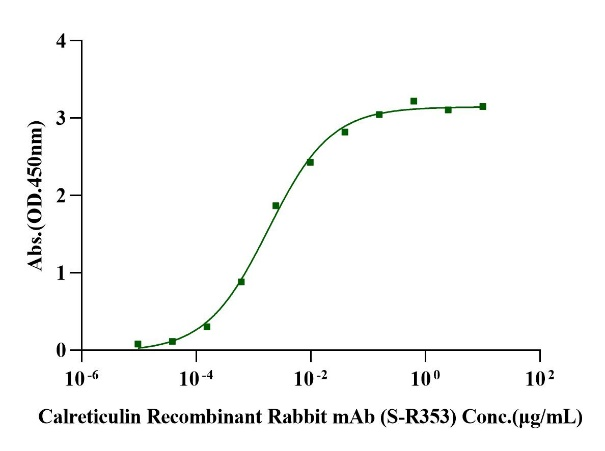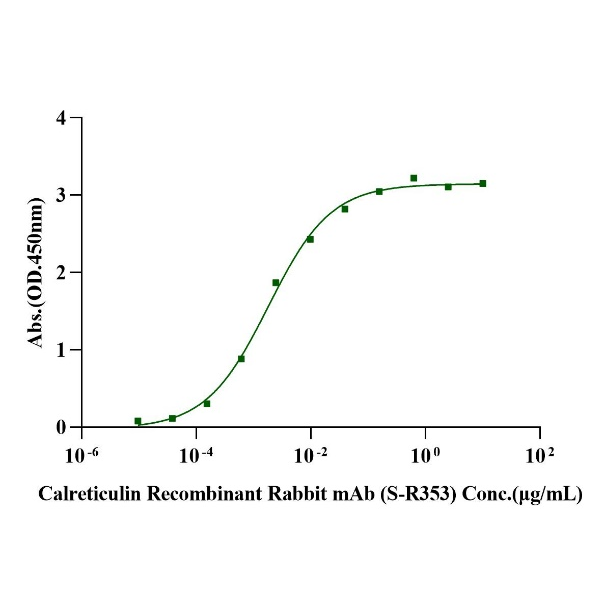2μg (R: reducing condition, N: non-reducing condition).
Product Details
Product Details
Product Specification
| Species | Human |
| Synonyms | CRT, HEL-S-99n, RO, SSA |
| Accession | P27797 |
| Amino Acid Sequence | Glu18-Ala413, with C-terminal His |
| Expression System | HEK293 |
| Molecular Weight | 50-60kDa (Reducing) |
| Purity | >95% by SDS-PAGE |
| Endotoxin | <0.1EU/μg |
| Conjugation | Unconjugated |
| Tag | His Tag |
| Physical Appearance | Lyophilized Powder |
| Storage Buffer | PBS, pH7.4. |
| Reconstitution | Reconstitute at 0.1-1 mg/ml according to the size in ultrapure water after rapid centrifugation. |
| Stability & Storage | · 12 months from date of receipt, lyophilized powder stored at -20 to -80℃. · 3 months, -20 to -80℃ under sterile conditions after reconstitution. · 1 week, 2 to 8℃ under sterile conditions after reconstitution. · Please avoid repeated freeze-thaw cycles. |
| Reference | 1.Michalak M, et al. (2002) Calreticulin in cardiac development and pathology. Biochim Biophys Acta. 1600(1-2):32-7. 2.Chao MP, et al. (2010) Calreticulin is the dominant pro-phagocytic signal on multiple human cancers and is counterbalanced by CD47. Sci Transl Med. 2(63):63ra94. 3.Andrin, C, et al. (1998) Interaction between a Ca2+-binding protein calreticulin and perforin, a component of the cytotoxic T-cell granules. Biochemistry. 37(29):10386-94. |
Background
Calreticulin is a multifunctional protein. It acts as a main Ca(2+)-binding (storage) protein in the lumen of the endoplasmic reticulum. Calreticulin binds Ca2+ ions (a second messenger in signal transduction), rendering it inactive. The Ca2+ is bound with low affinity, but high capacity, and can be released on a signal. Located in storage compartments associated with the endoplasmic reticulum, calreticulin also binds to misfolded proteins and prevents them from being exported from the endoplasmic reticulum to the golgi apparatus. The amino terminus of calreticulin interacts with the DNA-binding domain of the glucocorticoid receptor and prevents the receptor from binding to its specific glucocorticoid response element. Calreticulin reduces the binding of androgen receptor to its hormone-responsive DNA element and inhibits androgen receptor and retinoic acid receptor transcriptional activities in vivo, as well as retinoic acid-induced neuronal differentiation. Therefore, calreticulin acts as a significant modulator of the regulation of gene transcription by nuclear hormone receptors.
Picture
Picture
SDS-PAGE
ELISA

Immobilized CALR/Calreticulin His Tag, Human (Cat. No. UA010689) at 2.0μg/mL (100μL/well) can bind Calreticulin Recombinant Rabbit mAb (S-R353) (Cat. No. S0B0474) with EC50 of 1.37-2.37ng/mL.


